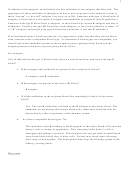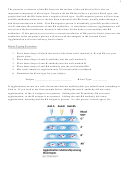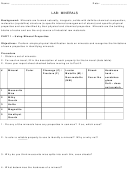Blood Laboratory Lab Report Template
ADVERTISEMENT
1
BIO 105
Summer 2013
Name ________________________
Blood Laboratory
In this laboratory exercise you will be asked to (1) identify specific blood cell types on a model
and (2) determine the blood type of a blood sample.
Identification of blood cell types
Below you have a chart identifying the types of cells found in a blood sample. These cell types
can be divided with three categories: white blood cells (leukocytes), red blood cells (erythro-
cytes), and platelets (thrombocytes). The main function of the erythrocytes is to carry gases
(oxygen and carbon dioxide) in the blood. Leukocytes, on the other hand, are more important for
the immune response. White blood cells are generally divided into two categories, based on the
appearance of the cells. Granulocytes have granules (grains) in their cytoplasm. The granules
are actually sacs containing chemicals that are used as weapons to destroy invading
microorganisms, especially bacteria. Agranulocytes lack cytoplasmic granules or have very small
granules. Each type of white blood cell has its own function, as you can see below. The
platelets, which are cell fragments, are involved in the clotting process.
Procedure:
1. Identify the following cell types on the blood model:
erythrocytes, thrombocytes, neutrophils, basophils, eosinophils, monocytes, lymphocytes
2. Identify the functions for each of these cell types.
Blood typing
Human blood types are based on the presence/absence of certain glycoproteins found on the
surface of our red blood cells. These glycoproteins are referred to as antigens, because they are
capable of causing an immune response. There are two major types of red blood cell antigens:
the ABO system and the Rh factor.
ABO system
A person with only the “A” antigen present on the surface of the red blood cells has type A
blood. An individual with only the “B” antigen present has type B blood. If a person has both
“A” and “B” antigens present, then they have type AB blood. Finally, if a person has neither of
these antigens present, then he/she has type O blood.
ADVERTISEMENT
0 votes
Related Articles
Related forms
Related Categories
Parent category: Education
 1
1 2
2 3
3








